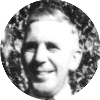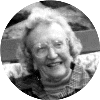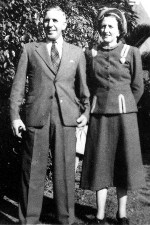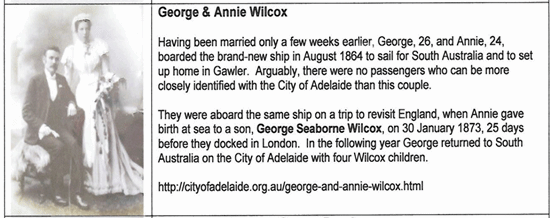 |
Jack Wilcox - Ancestors, Family & Descendants
|
 |
|
|
|
Sitemap |
| Contact The Wilcox Family |
|
Last update: March 16, 2024, 21:09 |
| Home > Wilcox Story told by Sydney Wilcox in 1938 |
Wilcox Story told by Sydney Wilcox in 1938HOME WILCOX HISTORY 1780 to 1932 WILCOX HISTORY 1910 TO 2002 WILCOX FAMILY TREES WILCOX FAMILY PHOTOS DOCUMENTS
Return to CONTENTS & INDEX 1864 The cabin that George and Annie Wilcox had on the first voyage of the ship to Adelaide in 1864 is not known.
1872 Cabin No.2 was occupied by George and Annie Wilcox with children, Edith, Sidney and Nellie, on voyage to England, which began September 1872, round Cape Horn. The passage taking 140 days to Plymouth. The ship was to have gone by way of Cape of Good Hope, but the winds would not allow of it, and the ship having drifted so far South, the Captain decided to go by Cape Horn. 1873 George Wilcox, the second son, was born in Cabin No.2, on 30th January 1873, just off the Scilly Isles. On this voyage George Wilcox had hired Cabins 4 and 6, which he had fitted up with cages for thousands of Shell Parrots, Spotted Love Birds, Blue and Red Finches, Galahs and White and Yellow Crested Cockatoos. Two tons of seeds were loaded to feed them on, and special provisions had to be made for drinking water for them. I do remember, though I was only 6 1/4 - 6 1/2 years old, helping to feed and water the birds, and clean the cages. A quantity of sand had also been placed on board to keep the cages decently clean. When we arrived off Land's End, Father decided with others, to leave the ship and land at Penzance in Cornwall, by the Pilot boat, taking train to London in order to sell his birds before the ship arrived at the dock - he took me with him. In those days it was 48 hours to London and another 6 or 7 hours to St. Neots where his family lived. Anyway, about 3 nights on the way, little "Jimmy" was pretty grimed and black by the time he got to grandmother in St. Neots. She shoved him into a hot bath and soaped him - in a moment or two she rushed out calling "Joe! Joe! the child is as white as our own, not the nigger we expected." That saved the other kids, Ede, Nell and George, from being dubbed the same - "Australian Niggers." Well, carrying the story along, Father had very few friends left in England, it was cold to him, ugly cold and dreary to us children all crying out for the sunshine. 1874 It was decided Mother and the four children should return to Adelaide in the ship "City of Adelaide" at the end of May 1874. The ship was stranded on the coast at Kirkaldy Beach, now called Henley Beach, on the night of 24th August, 1874. Passengers were taken off after 48 hours by tender. Father had arrived earlier by P.& O. Mail, and was on the beach at 10am 25th August, 1874, but of course could not help. We went to lodgings in Augas Street, and about the end of September got a 2 story semi-detached house near the corner of South Terrace, East, and Hanson St., South East. There Murray was born November 9th, 1874. Ede was then 9 1/2 years old, I (Sidney) 8 1/4, Nell 6 11/12, George 1 10/12 years. At the time of Murray's birth, father was in bed very ill with Bright's Disease. George, your father (George)was also in bed very ill with what today might be called Infantile Paralysis (Poliomyelitis). Matters were not too flourishing at that time, and it meant the usual old monthly nurse for mother had to look after father as well as she could with only a bit of general help from a girl. Ede (9 1/2) had to take your father George, and mother him, and she did it well. I, (Sidney) (8 1/4) had to take Murray and do the best I could, and of all the pesky kids that ever came into the world, well "Nip" was that one. Poor little beggar, he could not help all of that, it was his bad luck to appear on the state at that time. I have often wondered why I did not drop him on the brick floor of the kitchen, when he had a pesky fit and break, his neck to quieten the nuisance.
For 2 years or more, Ede and I did not have much of a childhood in such a hurly-burly. Nell of course could push a go-cart, but in those days it was a double side-by-side seat pram, pretty heavy, and I think Nell was a bit of a sticker. Anyhow, she used to land "Nip" a few heavy ones, and he never cared much for Nell. I dare say I might have landed him some also. You see as time went on, George and I, being closer in years, palled up, and rather drifted away from the 3 older ones. There were constant scraps. 1881 Mother suffered a good deal from Asthma, South Terrace evidently was not a healthy site for any of us, so in 1881 we moved to our big old house "Eynesbury" at Lower Mitcham. There Mother was a good deal better till she died of heart trouble in April 1897. 1890 - 1917 Father (George Snr) was troubled with his Brights Disease up to about 1890 and it seemed to be easier then for some years. He later in 1905 developed "Phlebitis" in both legs and gradually suffered increasingly very great pain till he died September 5th, 1917, two years after your own father died, July 14th, 1915. I often found him at his desk with streaming eyes, but nothing could be done, Now about ANCESTRAL HISTORY. The tradition of the family is they Were "Huguenot" of the name of "Villon" silk weavers from Lyons in France, then Leon. They settled in Spittalfields, London, where the Silkies congregated. The name "Villon" gradually became corrupted or Anglicised to "Wiliox", "Willcocks", "Wilcox." We skip a long period now, however one of the descendants was a Joseph Willcocks, who married the only daughter of William Jennens (Jennings) by his second wife. William Jennens was reputed to be a very wealthy Coal Merchant of Manchester, and was dubbed "Solomon the Magnificent" for his ostentation. He evidently was a bit of a lad, as he had run away with a girl. (This story is a myth. The ancestor was Thomas Wilcox, a fellmonger who was married to a Mary ? See certificate of discharge) The Jennens family was supposed to be of some note, the eldest girl of the first wife of William, married the Lord Howe of Howe Castle, Norwich. On the death of Solomon the Magnificent, the Lord Howe seized all his estate, and it's from that, that the famous case of the Jennings Millions in Chancery (made much of by Dickens) came to fame, but there was never any Jennings Estate that got into Chancery; what little there was left the Lord Howe got and put away quickly. Your Great Aunt Sue (firstly Mrs Peppercorn, and then Mrs Gutheridge) was a great believer in this Chancery Estate, and spent a lot of money on it. It was not until I got to London in 1902 and met a Jennings of Norwich and had a good talk over it that old John Wilcox and Reg helped me to persuade her to chuck the whole job and burn all the papers and rubbish she had collected. However, to continue, Joseph Wilcox was a bit of a lad. All we really know is that he was with Wellington in Spain - being a tailor by trade and a smart looking chap. Tradition says Wellington adopted him as personal Batman, although he had to carry his gun when needed. Tradition again says he "well dolled Wellington up for the day of Waterloo." 1815 In those days "women followed camp", that is, common soldiers' wives followed them, and more or less did the cooking and camp work. Mrs Joseph Wilcox was there, and either the night before or the night after Waterloo, her third child William Wilcox, was born in the camp on the actual field of Waterloo. We don't know her Christian name, and we don't know where Joseph and his wife are buried. All we know is that Joseph and his wife had 3 children, Joseph born 1911, Mary born 1813, William born 1815, on Waterloo day. William (1815) married but had no family, came to Adelaide and was in the Railway Service till he went to England in 1873/74. I just remember him as a porter who had lost an arm in the rail service, and he conducted us from the train at Port Adelaide to the ship "City of Adelaide" in 1872. Mrs William Wilcox, I don't know who she was, died first. They had adopted her niece, who got badly disfigured by the bursting of a kerosene lamp. William left all his little fortune to a trust, to give her £1 weekly - old John Wilcox, Reg's father, was Trustee. John thought it a nuisance and as she was weakly and might die at any time, got her to agree that he should take the capital and give her £1 a week for life. She bucked up and lived many years, and John lost many hundreds over it; it all came out in 1903, when I was over there; she was still living then. Mary (1813) was a woman of some character. She heard the owner, John Bushell, of, the Swan inn, at Leighton Buzzard Lines - had lost his wife and consequently wanted a housekeeper. She got the job and quickly married him. It was a big place that had been drifting. She re-made it and being on the old Posting Road, London-Lincoln-York, they had a mob of post horses, coaches and boys. With the advent of the railway, the Inn drifted again. She was left the remains of it when John Bushell died. She had only one child, John, he only had one child named John again, who died young with ho family. Joseph (1811) became a tailor, and was the leader of his calling in St Neots, getting all the gentry jobs, uniforms in particular for the Dukes of Manchester and Rutland. He did very well, was a speculator in Argentine and Brazil stocks, and had a good spin. Up to mid-life he was a wowser of the first vintage in the Congregational Chapel. What cards, the theatre, a spot. On your life you daren't mention them, till one time about 1880 (he died in 1893) a new parson came to the Chapel - a very liberal minded man who bucked up the Chapel. One day he said to Old Joe, "There's a fine Shakespeare play at such and such a theatre tomorrow night, and the return fare is 2/6 (60 miles each way) Pit Seats 2/6, will you take me to it Old Joe bucked, Sally his wife came in and said "you old fool, it's time you did something, and the parson says its good. Go, you have got to go!" Joe did, and, it was about a monthly job afterwards. Then came Card parties, then 'a spot or two. Sally was a good, old sort, and a sport. She was Sarah Emery, her father was in the Howard Britannia Implement Factory. One of the family kept the "Blue Cow Inn" on the London-Bedford-Huntingdon Post road to Leicester and Manchester. It was of quite some importance in pre-rail days about 1833. They had some 12 or 14 post horses. Joseph, as said, married Sarah Emery. They had 12 children. Thomas, who married Priscilla Heydon had 6 children. Emery had 4 children. Mary, died young Nil children. George, born 1838, married Annie Fuller in 1864 and was your Grandfather had 5 children. Susannah, m.1 Peppercorn, m. 2 Gutheridge had Nil children. Joseph, married Eliza Mayfield had 7 children. Fanny, married S. Shiison had 3 children. John, married Mary Redman had 3 children. (Reg and Frank's father) Murray, died young Nil children. Harry, married Crowley a Canadian had 3 children. Ernest had 4 children. William, not married Nil children. This was a mob, and they came pretty quickly, one after the other, and had to be provided for. Thomas was apprenticed to a Linen Draper and Costumier, Geord's at St. Neots, and later married one of the girls, Patricia Heydon. Emery, nothing really known of him, but possibly followed his father as a tailor. George, apprenticed at 12 years old for 7 years to Bedells, a big Grocer at Leicester. Joseph at the age of 12 was sent to George in Gawler, South Australia. In fact he was sent out with Priscilla Heydon in about 1860 when she was on her way out to marry Thomas. 1880 John followed his father, in St. Neots as a Tailor, till he was appointed London Agent in 1880 for my father, George (then William Mofflin and Co., in 1889 George Wilcox & Co., and 1918 Wilcox Mofflin Ltd. He moved to London in 1889. Harry became a doctor of medicine in Dublin. Ernest was a doctor of medicine in Edinburgh. William was a Licentiate of a Pharmacy in Lincoln with Sue's husband, Peppercorn. 1856 Thomas was the first to come to Australia. I think in 1856, with William Barker. Barker I think came from St. Neots also. I believe old Joseph gave Thomas £500 to go into business with Barker, whether they came out together, I don't know; and why they went to Gawler, I don't know, unless Barker already had friends there. 1858 Evidently it was not long before they got into trouble. Old Joseph sent Emery out to clean up matters. Emery was a drunk and made things worse. That would be in 1858 George (Snr) had made up his mind to come to Australia about that time his first idea was Sydney, where he had Leicester friends; Keeps, Beards, Schlenkers, Parsons. Joseph gave him a free hand to go to Gawler, and properly clean up the job, fire Thomas, Emery and Barker, and sell up. He fired the lot and found a business could be made as Gawler was the nearest big town to the city of Port Adelaide. All the traffic of the big copper mines from Burra-Burra and Kapunda had to pass through Gawler. George arrived in Melbourne late in 1858 ex the Auxiliary Steamer "Great Britain." He arrived in Adelaide in March 1859 ex coastal steamer "Admella." The "Admella" was wrecked on the next voyage near Mr. Gambier, and most of the people on board lost. Even as early as late 1839, when George (Snr) had fired the other crew, there was talk of building the railway from Pt. Adelaide to Gawler, to catch the copper mine traffic. George could see that it would much add to the success of a general store. Having money of his own he proposed to go into full partnership with old Joseph, the firm to be J. & G. Wilcox, Merchants. That's how that started. Emery had disappeared. Later he was heard of in Sydney where he had married. I know he had 3 daughters - 2 I think married brothers named Douglas, both in the Machine Department of Sydney Morning Herald. The son went into N.S.W. Survey Department, and was articled to Koeford, your mother's aunt's husband, then in charge of the Wagga District, and later Consul for Denmark in Sydney. Koeford spoke well of the youngster, but he did not use the name of Wilcox then, though Koeford knew of it. Whilst Emery's children were quite young, he disappeared again, for good. He was believed to have gone to South Africa, and lost there. Why Mrs Emery and family did not continue under the Wilcox name I never heard, and I cannot recall the name she used. 1872 Young Joseph was sent out with Priscilla Heydon. They arrived about the time Thomas was fired. George had to provide for young Joe and took him into the shop. Joe in 1872 bought the business from George. Joseph (Jnr) had quite well learned his job in the 12 years 1860-1972. 1863 Now going back a few years. Towards the middle of 1863 George thought it time for a trip to England, and possibly to find a wife. Sailing ships usually left between September and November to have the summer weather round the Cape or Cape Horn. George took passage in the "Murray" Captain John Legoe, (the father of our Glen Legoe) unknown to one another, both had got together a big mob of birds and animals. Legoe had wondered why George had hired 3 cabins. The agents didn't tell why. When Legoe saw the live stock going on board there was the devil of a row, and he could swear, but could not alter the matter. However, they were not such bad pals in the end, though George left the boat at Plymouth, hurried to London, and sold his collection to Jamracks, and Captain Legoe had to take second place at lesser money. That's been a joke with us right up to today. Anyway as you know the acquaintanceship opened up to partnership and life-long friendship of the Legoes and Wilcoxes. George met Annie Fuller. Her eldest sister had married Bedells, who had been apprenticed alongside George with Bedells senior at Leicester. Annie Fuller was the daughter of Thomas Fuller, a fairly large family at Leicester. It was something over 300 acres. George and Annie were married 3rd June 1864 and almost immediately sailed for Adelaide in the new ship "City of Adelaide." Thomas Fuller married an American, Green of Greentown, Green County, New York, and as Old Thomas used to say, "The best export ever from America." "Caldecot" is mentioned in "Doomsday Book." I went there a good deal as a kid, we all loved old Grandfather Fuller. He had 3 children, Mary, who married Bedells. (One Bedells girl married in South Africa, one single in Perth, Western Australia, 2 single in England, 2 sons of Bedells, one still alive in Perth, and the married one died in West Australia. Next came our Mother Annie, and the youngest Emily, married Nicholson and had no family. Grandfather Fuller had 2 sons. One went to the Bolivia-Peru War, the other son George, died at about 33, unmarried. HOME WILCOX HISTORY 1780 to 1932 WILCOX HISTORY 1910 TO 2002 WILCOX FAMILY TREES WILCOX FAMILY PHOTOS DOCUMENTS
|
| « prev | top | next » |

